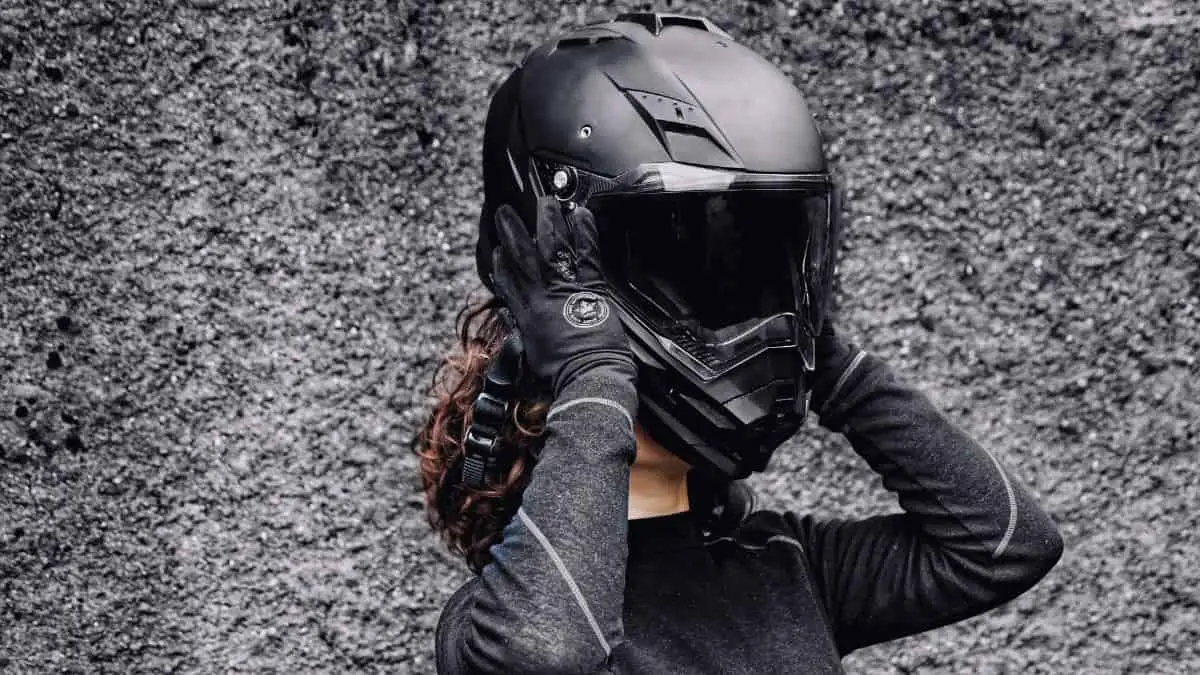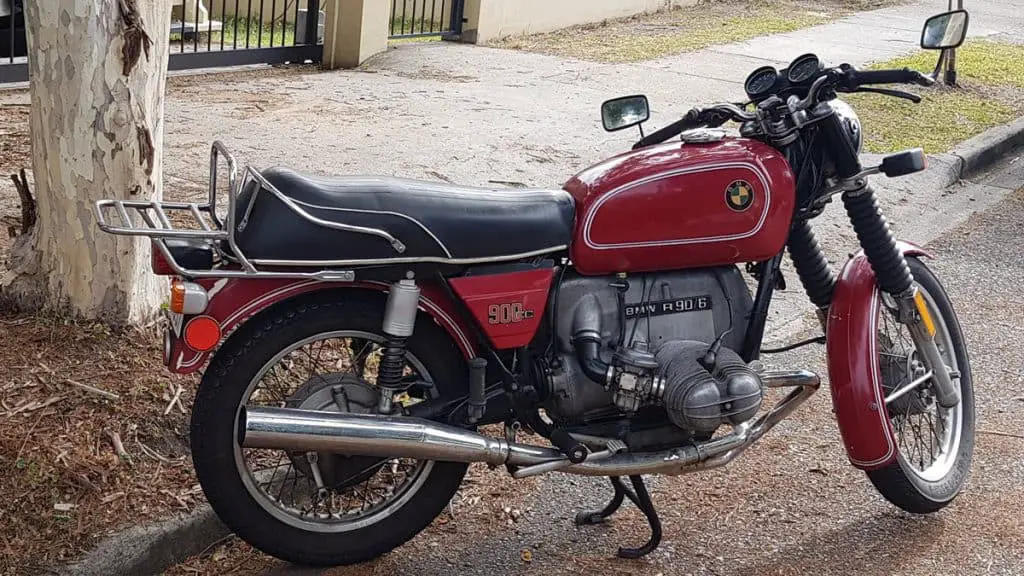Motorcycle Helmet Fogging Up: How to Get Rid of Cloudy Vision [6 Easy Tips]
One of the most annoying things that can happen while riding is fogging on the helmet visor. And once your field of vision is impaired while riding, it can get fatal within seconds.
Quite simply, if you have faced it once, fogging is not a problem that you want to allow to continue.
So, how to prevent fog formation on motorcycle helmets?
Before you rush off to buy a bunch of motorcycle helmet anti fog solutions, here are a few things that you need to know about motorcycle helmets fogging up.
Why Does My Motorcycle Helmet Fog Up?
Let’s start with the why.
There are two main reasons that can cause helmet visors to get fogged up. The primary reason is the temperature difference between the air inside and outside the helmet. This happens mostly during the winter or the rainy season
In cold and windy conditions, the helmet visor can get too cold while riding. As the moist air comes in contact with this surface, it gets cooled to its dew point temperature, and water droplets form. (That’s the same way you find water droplets on your lawn in the morning.)
When it is raining heavily, the humidity in the air is too high. Besides, the air you breathe out contains a lot of moisture. Ultimately, the moisture content of the air inside the helmet becomes so high that it can’t hold any more water. As a result, condensation forms on the helmet visor.
And condensation doesn’t form only on the inside of the helmet. In some conditions, the outer surface of the visor can also get fogged up.
How to Stop a Motorcycle Helmet Fogging Up: 6 Tips

Now that we know why it happens, let’s talk about how to make it NOT happen.
But remember this: before you seek anti-fog solutions, make sure to keep the helmet visor clean at all times. It’s not uncommon to find dust particles sticking to the visor surface and obstructing vision. For frequent riders, cleaning the visor once in 3 or 4 days is important.
By the way, cleaning and maintaining the visor is much akin to cleaning the windscreen (if you have one). So check out this guide so you could make sure it gets squeaky without scratching it.
1. Increase Ventilation
The easiest way to clear the fogging is to open the vents in the helmet and increase the ventilation. In fact, it’s also the cheapest solution.
Try opening up the vents that are integrated into the helmet. Many helmets have vents around the chon area that help in the airflow. Vents will increase the airflow and allow the excess moisture to escape. This will also reduce the temperature difference between the inside and outside of the helmet.
You might think of opening the visor, but getting blasted by freezing winds or rain droplets isn’t a particularly thrilling idea while riding. Moreover, there’s also the chance of road debris getting into the helmet.
Thankfully, modern helmets have notches that allow you to open the visor as much or as little as you want. Cracking it open just a few millimeters increases the ventilation, without allowing too much air to come in.
If that’s not possible, you can try opening the visor for a few seconds and then close it back again. But this will be a continuous process and can be distracting.
2. Pin-Lock Anti-Fog Inserts
Using pin-lock motorcycle helmet inserts is one of the best anti-fog solutions you can choose. The transparent material is attached to the top of the helmet visor by using two pins and works as a second layer.
This results in a layer of air getting trapped between the two surfaces. This air layer insulates the visor surface from colder temperatures. In addition, the inner surface of the material has silicone beads that have moisture-absorbing properties.
If your visor is pinlock-ready, inserting the material is a simple process. I suggest that you visit a professional to insert the pin lock insert. The insert can scratch the visor if installed in the wrong manner.
Even though this is a relatively expensive option, it’s the best solution for frequent riders. Personally, I prefer a pin lock motorcycle helmet since they are super effective even in worse weather conditions. Add to that, the convenience of the pinlock mechanism adds to the ease of use.
3. Helmet Anti-Fog Inserts

Anti-fog inserts or films are a great idea as they are cheaper than pin locks and can reduce fogging by a large degree. Also, it’s a one-time process that’s super easy and can be used on helmets that aren’t pinlock-ready.
These nano-coated films have hydrophilic characteristics along with anti-scratch properties. On the downside, the “stick and go” system can be tricky to install on curved surfaces.
(Yes, I am speaking of those cursed air bubbles that tend to get in the way.)
Also, make sure that you pick a high-quality product that’s effective and optically perfect. This means the inserts should meet the necessary ISO and ASTM standards.
4. Breath Deflectors
Using a breath deflector like a scarf or face mask or balaclava while riding will help in directing your breath away from the visor. Additionally, the material can also absorb some of the moisture and reduce the chances of condensation.
Some riders also use a neck tube that can function in a similar manner. Personally, I find neck buffs can obstruct the exhaled air from moving out in some conditions.
Many motorcycle helmets also come with integrated breath deflectors. Respiration masks that cover your nose and mouth are another option. A well-designed mask should have ventilation pores so that you don’t feel suffocated.
However, if you wear glasses, a mask can direct the breath upwards and fog them up.
5. Anti-Fog Coatings
Many helmet manufacturers provide an anti-fog coating on the visor. These coatings reduce the surface tension between water molecules and prevent the droplets from accumulating.
However, all anti-fog coatings will wear out with time and with frequent helmet use. In general, they last between a few months to a few years.
Beyond that, you can also use instant anti-fog sprays which are a great on-the-go solution to prevent fogging. In fact, with a good-quality spray, the difference between before and after is clearly noticeable.
Now, there are plenty of anti-fog helmet visors sprays and coats in the market that claim almost magical anti-misting features. But not all products have the same performance consistency in the “lab environment” as well as the road.
I have used the Muc Off Premium Anti-Fog spray and found it to be an easy-to-use anti-fog solution. It’s an affordable spray that you can carry along and one coat can easily last for 5-6 days.
6. Use Household Products

One old-school solution to prevent fogging is applying some dish soap on the visor and then wiping it with a soft cloth. While this works, the effect won’t last long. Some riders also use fabric detergent for this purpose.
Warning: dish soap and detergents may contain harsh chemicals that might damage the EPS liner of a top-grade motorcycle helmet. So, make sure to apply it with care.
Another trick is to cut a potato and rub the cut surface gently on the visor surface. The effect is similar and it lasts longer than dishwashers.
(I wouldn’t suggest experimenting with any other fruits or vegetables though.)
While we’re at homemade solutions, ever heard of the saying “If you can’t solve a problem, just spit on it?”
Okay, maybe I improvised a bit on that one. But it’s true: you can try to literally spit on the visor and rub the saliva around.
This and other de-fogging solutions for glasses might work, but be careful not to go too wild and damage the visor.
That said, don’t rub or clean the visor with your hands, even if you are wearing gloves. At least, use a soft clean cloth or paper towels for the purpose.
Frequently Asked Questions
Do motorcycle helmets fog up?
Motorcycle helmets do get fogged up in extreme cold weather and also during the rainy season when the humidity levels are high.
How to prevent fog on motorcycle helmets?
The best way to prevent fogging up of helmet visors is to use anti-fog inserts like a pin lock. Other than that, using anti-fog sprays or anti-fogging masks can also work. You can also try to reduce fogging by increasing the ventilation. This can be done by opening the helmet vents or the visor.
Does the anti-fog film work?
Anti-fog films use chemicals that prevent the condensation of water and reduce fogging. The films that come with the best quality are effective in reducing fogging.
Can I use alcohol to clean my helmet?
Do not use alcohol or any cleaners with harsh chemicals to clean the helmet visor or the pin lock insert of your helmet. The alcohol can damage the anti-fog coatings on the inserts and also the liners inside the helmet.






